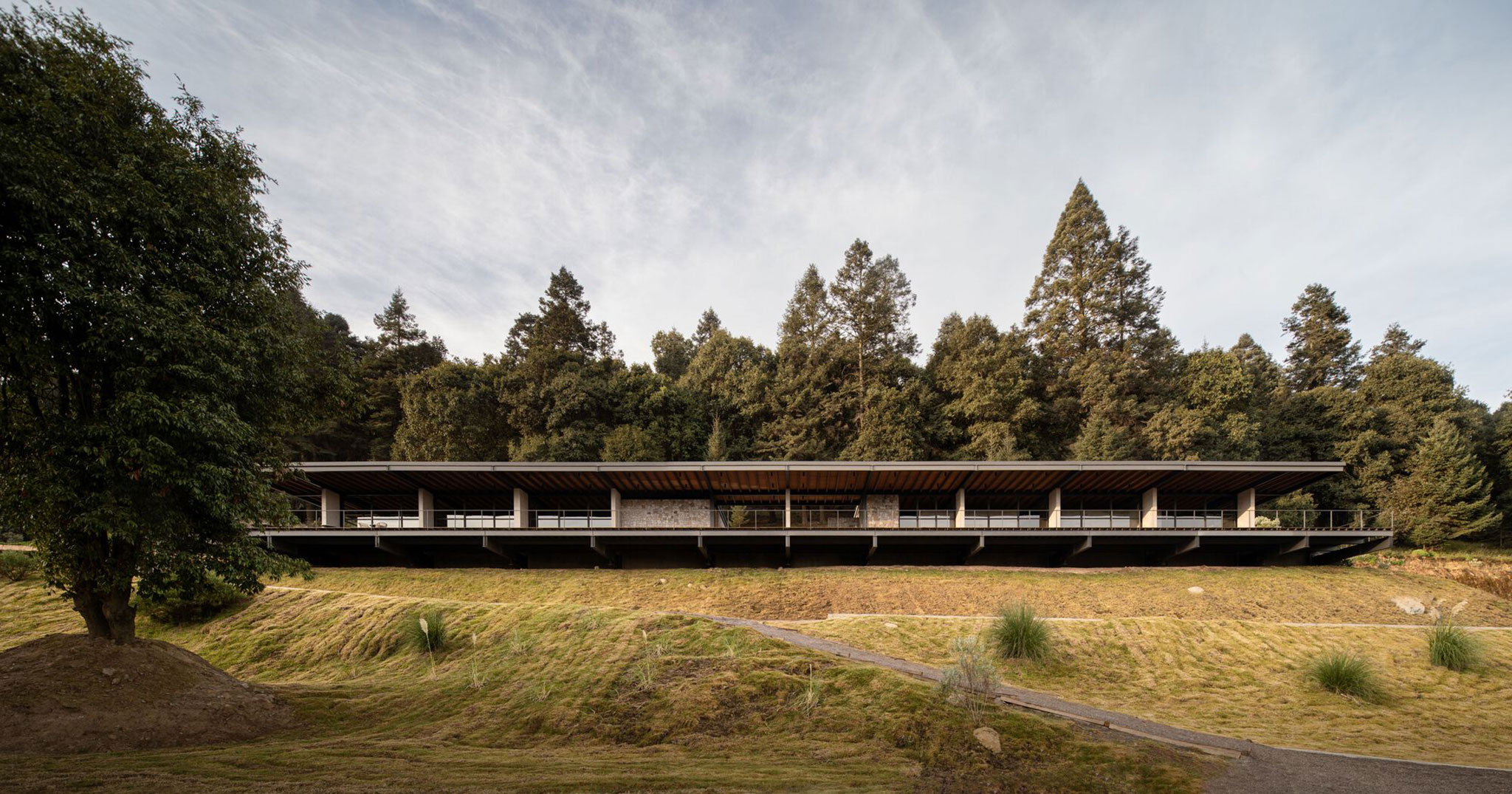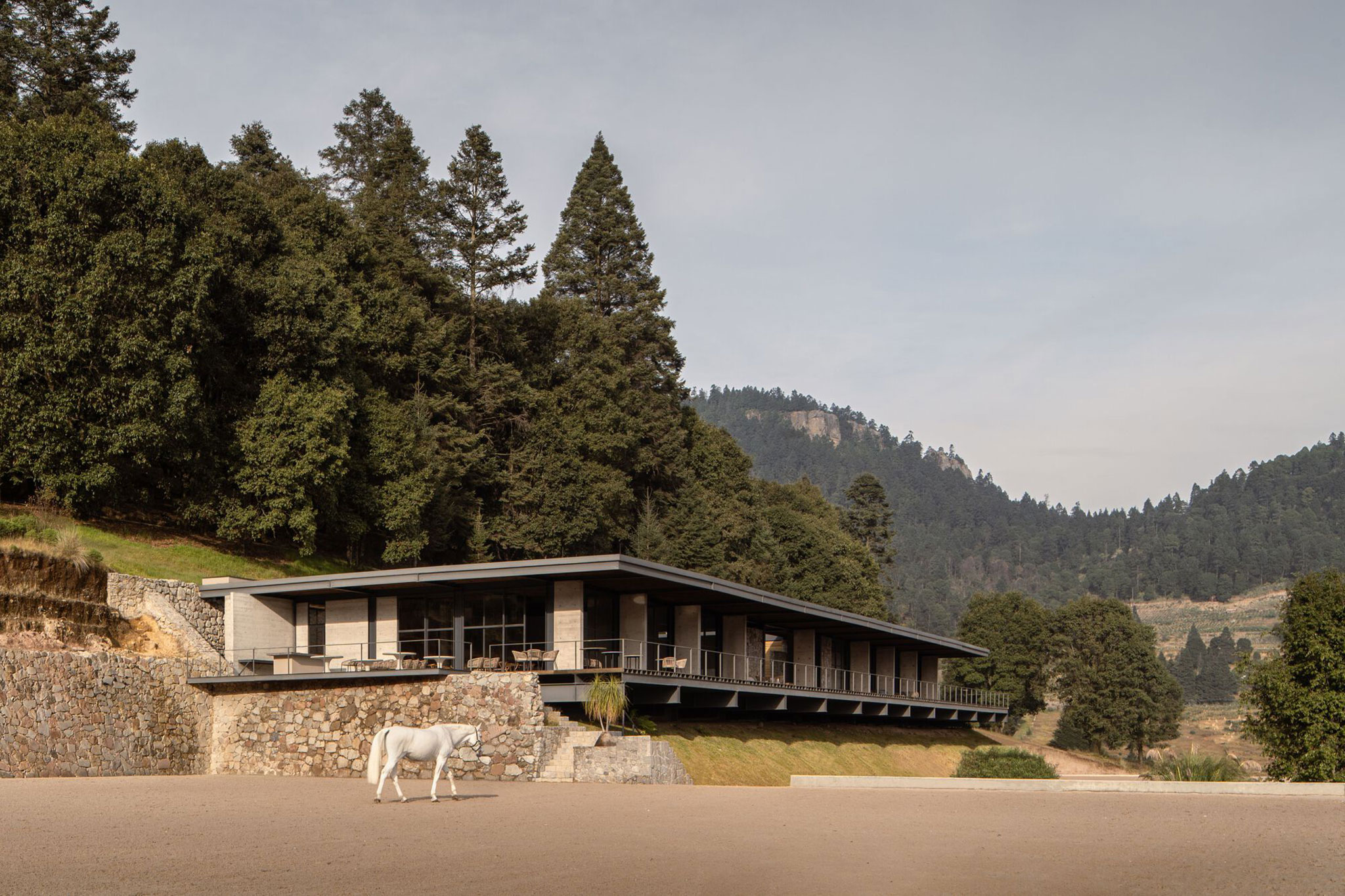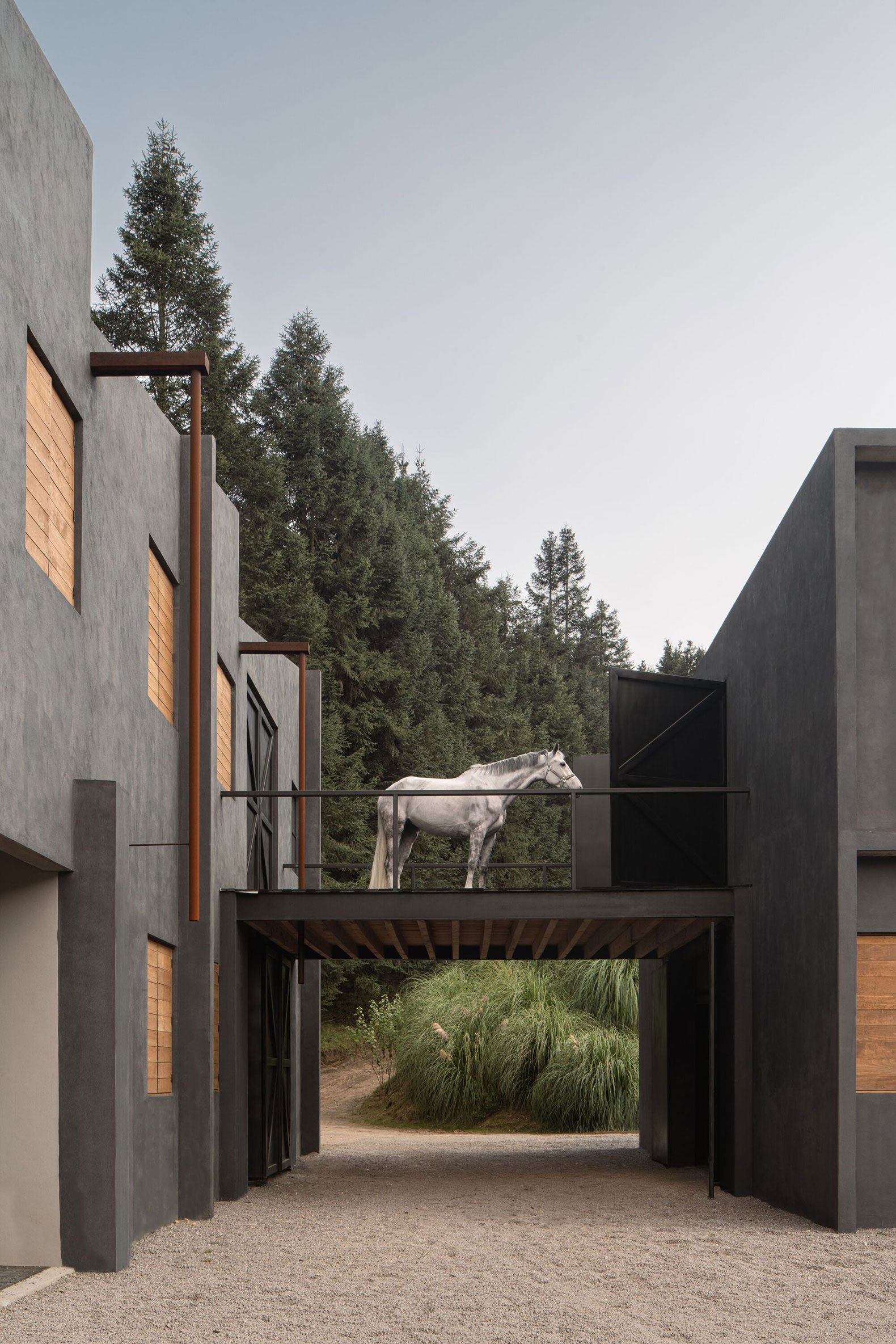The facilities, designed by Studio RC, take advantage of the slope of the land to place the partially cantilevered clubhouse building on different levels of the hillside and, down the hill, the stable with 110 stables, divided into 4 x 3-meter modules marking the rhythm of the gray concrete façade, organized on two floors, and composed of three separate modules that are joined by steel bridges, around an open central courtyard.
The geometry of the stables is uniform, following the modulation of the structure with concrete canvases finished in gray that alternate with raw wood panels for the windows, a horizontality that is offset by the sawtooth roof that tops one of the modules. Raw interior finishes are combined with a recycled floor covering that provides good traction for the horses and keeps noise levels down.
The clubhouse is located on the hill behind the stables. An elongated pavilion, carefully designed, with a steel structural modulation that houses a patio in the center to separate the public and private areas, which in turn are joined by a wide cantilevered terrace that accentuates the tension with the slope, with views of the valley and the rest of the facilities.

Piedra Grande Equestrian Clubhouse by Studio rc. Photograph by Cesar Belio.

Piedra Grande Equestrian Clubhouse by Studio rc. Photograph by Cesar Belio.
Description of project by Studio RC
The Hipico Piedra Grande Clubhouse is located on eight hectares of land surrounded by forest in the state of Mexico.
The project seeks to alter the site as little as possible, using the materials that it offers such as stone and wood, looking for a contemporary language that in turn was appropriate for the context.
The distribution of the clubhouse is governed mainly by a central patio that creates an atmosphere that invites you to contemplate the landscape framed by stone walls that also divide and causes a transition of access between the public and private space.

Piedra Grande Equestrian Clubhouse by Studio rc. Photograph by Cesar Belio.
A structural module system based on columns and steel beams is proposed so it can define the skeleton and the shape of the building thinking that in the future the roof can be habitable for different events that take place.
The opening to the valley and the mountains was one of the design priorities that was sought when doing this project taking advantage of the inclined topography to be able to integrate the large flown terrace that allows views of the surroundings.












































